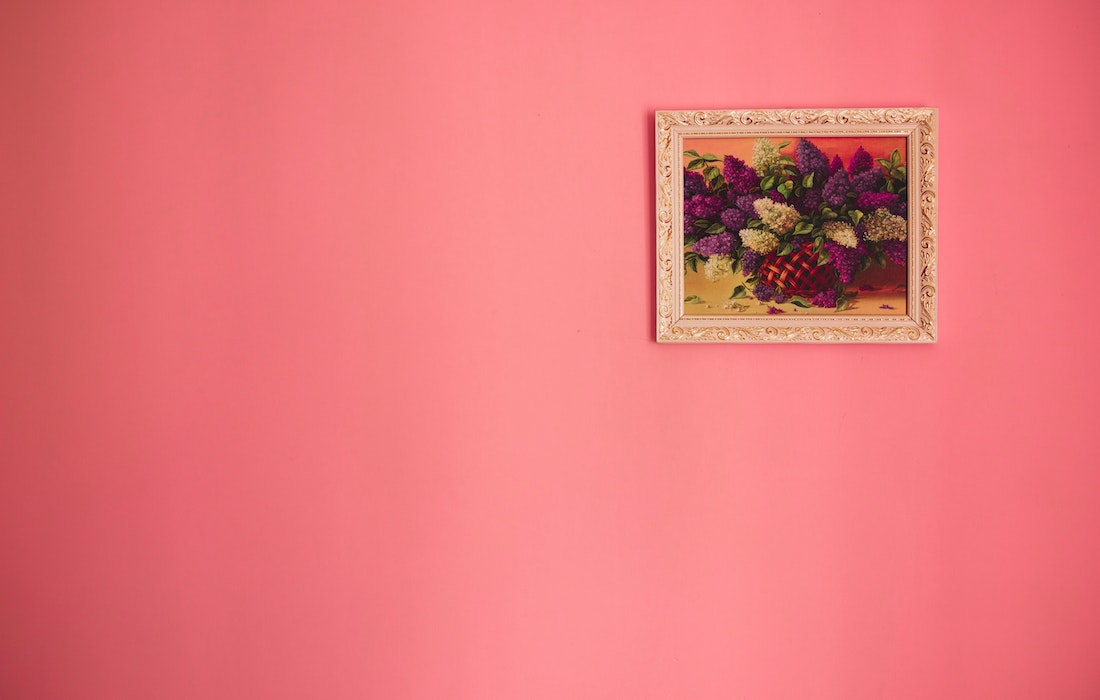Home improvement projects have become a popular trend among homeowners these days, especially during the pandemic when people spend more time indoors. Among the most popular projects is painting walls, with the paint market size increasing by 61% in recent years.
While many homeowners want to join the fun and add fresh color to their walls, some may have wallpaper that they’re not ready to remove. The question is, can you paint over wallpaper? This article will explore the answer and provide tips and considerations for those looking to take on this project.
Can You Paint Over a Wallpaper?

Many homeowners want to update the look of their walls by adding a fresh coat of paint, but they may not have the time or desire to remove the existing wallpaper. Fortunately, it is possible to paint over wallpaper in certain situations.
Painting over wallpaper can save time and money compared to the labor-intensive process of removing the wallpaper. However, before embarking on this project, it’s essential to understand the challenges and considerations involved in painting over wallpaper.
Assessing the Wallpaper

Before diving into painting over wallpaper, it’s crucial to assess the condition of the wallpaper first. Not all wallpapers are created equal, and painting over damaged, torn, or peeling wallpaper can lead to unsightly results.
There are different types of wallpaper, such as vinyl, fabric, and paper-backed, and each has its own set of challenges when it comes to painting. For instance, vinyl wallpaper is the most durable and can handle moisture. However, it’s also the hardest to paint over due to its slick surface. On the other hand, fabric wallpaper is more porous and easier to paint over, but it can shrink or warp when exposed to moisture.
To assess the wallpaper, start by checking for any damage, tears, or peeling. These should be fixed before painting to ensure a smooth and even surface. An excellent way to check for damage is to press a piece of masking tape onto the wallpaper and then quickly peel it off. If the wallpaper comes off with the tape, it’s likely not in good condition for painting.
When Is It Not a Good Idea to Paint Over a Wallpaper?
Aside from poor wallpaper conditions, other factors can influence whether or not you should paint over it. One of these is the texture of the wallpaper. Textured wallpaper will not be a good candidate for painting over, as it can lead to an uneven finish that looks odd and unappealing.
Another thing to consider is the age of the wallpaper. If it’s been up for a long time, it may have dried out or become brittle, making it more difficult to paint over. In these cases, it may be best to remove the wallpaper before painting or just install a new wallpaper.
Preparing the Wallpaper for Painting

Properly preparing the wallpaper before painting is essential to achieving a smooth and long-lasting finish. It’s important to start by cleaning the wallpaper surface thoroughly to remove any dirt, dust, or debris that may affect the adhesion of the paint.
To clean the wallpaper surface, mix warm water and mild detergent in a bucket. Using a sponge or cloth, gently scrub the wallpaper surface, careful not to damage the wallpaper. Rinse the wallpaper with clean water and let it dry completely before moving on to the next step.
After cleaning, it’s essential to prime the wallpaper to ensure better paint adhesion. Wallpaper primer is specially formulated to bond to the surface of the wallpaper and provide a smooth base for paint. Apply the primer with a roller or brush, working in small sections to ensure even coverage. Let the primer dry completely according to the manufacturer’s instructions before applying paint.
It’s worth noting that some wallpapers may require a specific type of primer, such as a stain-blocking primer for wallpapers with water stains or a high-adhesion primer for glossy or vinyl wallpapers. Read the label and choose the appropriate primer for your wallpaper type.
Painting Over a Wallpaper
Once the wallpaper has been properly prepared, it’s time to start painting. When choosing paint for painting over wallpaper, it’s important to select a high-quality paint that is formulated to cover well and adhere to the surface of the wallpaper. Choose a paint finish that suits the desired look and feel of the room, such as matte, satin, or gloss.
When it comes to tools, a roller is typically the best choice for applying paint to wallpaper. Use a high-quality roller with a medium nap to ensure even coverage. A brush may be necessary for painting in tight spaces or around edges.
To apply paint to the wallpaper surface, start by cutting around the edges of the room with a brush. Use the roller to apply paint in a “W” pattern, working in small sections at a time. Avoid applying too much pressure on the roller, as this can damage the wallpaper surface. Apply a second coat of paint after the first coat has dried completely.
Depending on the color and coverage of the paint, it may be necessary to apply a third coat of paint to achieve the desired finish. Be sure to let each coat dry completely before applying the next coat.
Common Issues and Solutions
Painting over wallpaper can be a challenging task, and there are several common issues that homeowners may encounter during the process. Fortunately, with the right tools and techniques, these issues can be overcome.
One common issue is air bubbles that can form between the wallpaper and the paint, creating an uneven surface. To avoid air bubbles, apply paint in thin, even coats, and use a roller with a medium nap. If air bubbles appear, gently puncture them with a pin and smooth the area with a roller or brush.
Another issue that may arise is the peeling or bubbling of the wallpaper. It can happen if the wallpaper isn’t properly prepared or the adhesive is not strong enough to hold the weight of the paint. To prevent peeling, thoroughly clean the wallpaper before painting, and use a primer to ensure better adhesion. In case of peeling or bubbling, gently remove the affected area and reapply primer and paint.
Bleeding is another issue that can happen when painting over wallpaper. It often results when the wallpaper’s design or color shows through the paint. To avoid bleeding, use a high-quality paint formulated to cover well and apply a coat of primer before painting. If bleeding still occurs, apply a second coat of paint or use a color darker than the wallpaper design.
Painting over wallpaper can be a great way to update the look of a room without the hassle of removing wallpaper. With the tips and solutions provided, homeowners can successfully paint over their wallpaper and achieve the desired look for their home improvement project.



